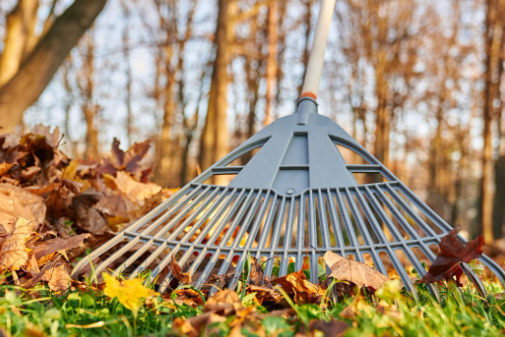As the colors of autumn sweep across the Carolinas, the resulting carpet of fallen leaves might look picturesque, but it poses a significant threat to the health of your lawn and garden. While some may view raking (or removing in general) as a purely cosmetic chore, experts emphasize it is an essential maintenance task for protecting your yard through the winter and ensuring healthy growth next spring.
The Smothering Effect
A thick layer of leaves acts like a blanket, but not the helpful kind. When a heavy blanket of leaves covers your turf, it blocks sunlight from reaching the grass blades. Since grass is a perennial plant, it doesn’t go completely dormant in the fall; it needs light to perform photosynthesis and store energy for the coming cold. Depriving the grass of light during this critical period can lead to weak, yellowed patches next spring.
Furthermore, once rain and morning dew saturate the leaves, they form a dense, matted layer that traps moisture. This creates the perfect environment for fungal diseases like snow mold and brown patch, which thrive in damp, low-light conditions.
Protecting Your Investment
Beyond the grass itself, neglecting to rake or remove leaves can also damage the underlying soil and curb appeal.
- Pest Harboring: Piles of wet, decaying leaves are ideal shelter for pests, including rodents, slugs, and snails, which can move on to damage your shrubs and perennials.
- Preventing Water Runoff: Large leaf piles can obstruct drainage and cause water to pool on the lawn, leading to localized flooding and soil compaction.
Alternatives to Raking
If the thought of endless raking is daunting, homeowners have viable alternatives:
- Mowing/Mulching: For thinner layers of leaves, running a lawnmower over the area can shred the leaves into fine pieces of organic matter. These small pieces filter down to the soil, where they naturally decompose, acting as a free layer of nutrient-rich mulch that benefits the lawn. The shredded pieces should be small enough that they don’t smother the grass.
- Composting: Collected leaves are an excellent “brown” material for compost piles. When mixed with “green” materials like grass clippings, they create rich soil amendments for flower beds.
Regardless of the method, the critical takeaway is to remove or finely mulch the leaf layer before it becomes too thick and wet. Timely removal now ensures your lawn remains healthy, breathes correctly, and emerges green and resilient when spring arrives.
Sign up for our Sunday Spectator. Delivered to your inbox every Sunday, with all the news from the week.
















